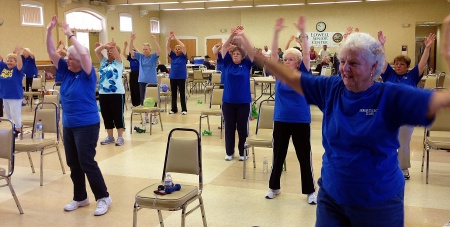Polypharmacy: Difference between revisions
No edit summary |
No edit summary |
||
| Line 1: | Line 1: | ||
<div class="editorbox"> '''Original Editor '''- [[User:Shwe Shwe U Marma|Shwe Shwe U Marma]] '''Top Contributors''' - {{Special:Contributors/{{FULLPAGENAME}}}}</div> | <div class="editorbox"> '''Original Editor '''- [[User:Shwe Shwe U Marma|Shwe Shwe U Marma]] '''Top Contributors''' - {{Special:Contributors/{{FULLPAGENAME}}}}</div> | ||
== Introduction == | == Introduction == | ||
Polypharmacy refers to the use of multiple medications in a patient, commonly an [[Older People - An Introduction|older adult]].<ref name=":0">Nguyen T, Wong E, Ciummo F. [https://www.npjournal.org/article/S1555-4155(19)31051-7/fulltext Polypharmacy in Older Adults: Practical Applications Alongside a Patient Case]. The Journal for Nurse Practitioners. 2020 Mar 1;16(3):205-9.</ref> While the most commonly used definition of polypharmacy is being on five or more medicines, definitions are variable.<ref>Masnoon N, Shakib S, Kalisch-Ellett L, Caughey GE. [https://www.ncbi.nlm.nih.gov/pmc/articles/PMC5635569/ What is polypharmacy? A systematic review of definitions]. BMC geriatrics. 2017 Dec 1;17(1):230.</ref> | [[File:Tablets Polypharmacy.jpg|alt=Tablets and pills|527x527px|right|frameless]]Polypharmacy refers to the use of multiple medications in a patient, commonly an [[Older People - An Introduction|older adult]].<ref name=":0">Nguyen T, Wong E, Ciummo F. [https://www.npjournal.org/article/S1555-4155(19)31051-7/fulltext Polypharmacy in Older Adults: Practical Applications Alongside a Patient Case]. The Journal for Nurse Practitioners. 2020 Mar 1;16(3):205-9.</ref> While the most commonly used definition of polypharmacy is being on five or more medicines, definitions are variable.<ref>Masnoon N, Shakib S, Kalisch-Ellett L, Caughey GE. [https://www.ncbi.nlm.nih.gov/pmc/articles/PMC5635569/ What is polypharmacy? A systematic review of definitions]. BMC geriatrics. 2017 Dec 1;17(1):230.</ref> | ||
[ | The World Health Organization suggest that while the definition is numerical, emphasis should be on evidence-based practice and that the goal must be to reduce inappropriate polypharmacy.<ref name=":3">Varghese D, Koya HH. [https://www.ncbi.nlm.nih.gov/books/NBK532953/ Polypharmacy]. StatPearls [Internet]. 2020 Feb 18.Available from:https://www.ncbi.nlm.nih.gov/books/NBK532953/ (last accessed 24.11.2020)</ref> | ||
== Catagories == | == Catagories == | ||
There is no universally agreed definition of polypharmacy, however it can be described in 3 groups- | There is no universally agreed definition of polypharmacy, however it can be described in 3 groups- | ||
| Line 57: | Line 56: | ||
== Complications == | == Complications == | ||
This may result in various medication-related problems such as- | This may result in various medication-related problems such as- | ||
Adverse effects (ADE): refers to an injury resulting from the use of a drug and refers to harm caused by a drug at usual dosages. ADEs are causative in 5% to 28% of acute geriatric medical admissions. Preventable ADEs are among one of the serious consequences of inappropriate medication use in older adults. The drug classes commonly associated with preventable ADEs are cardiovascular drugs, anticoagulants, hypoglycemics, diuretics, and NSAIDs. Adverse drug effects are higher in older adults due to metabolic changes and decreased drug clearance that come with age. This risk compounds by increasing numbers of drugs used<ref name=":3" />. | |||
Drug interactions: The use of multiple medications increases the potential for drug-drug interactions ie the pharmacologic or clinical response to the administration of a drug combination that differs from the response expected from the known effects of each of these two agents when given alone. Cardiovascular drugs are most commonly involved in drug-drug interactions. The most common adverse events related to drug-drug interactions are neuropsychological (delirium), acute renal failure, and hypotension<ref name=":3" />. | |||
Inappropriate therapy, or nonadherence.<ref name=":0" /> | |||
The risk for Hip Fracture: Polypharmacy has been shown as an independent risk factor for hip fractures in older adults in some case-control studies; although the number of drugs may have been an indicator of a higher likelihood of exposure to specific types of drugs like central nervous system (CNS)-active drugs associated with falls.<ref name=":3" /> | |||
== Managing Polypharmacy == | == Managing Polypharmacy == | ||
Revision as of 07:09, 24 November 2020
Introduction[edit | edit source]
Polypharmacy refers to the use of multiple medications in a patient, commonly an older adult.[1] While the most commonly used definition of polypharmacy is being on five or more medicines, definitions are variable.[2]
The World Health Organization suggest that while the definition is numerical, emphasis should be on evidence-based practice and that the goal must be to reduce inappropriate polypharmacy.[3]
Catagories[edit | edit source]
There is no universally agreed definition of polypharmacy, however it can be described in 3 groups-
- Excessive polypharmacy (EPP): concurrent use of ten or more different drugs.
- Polypharmacy (PP): the use of five to nine drugs.
- No polypharmacy: taking four or less drugs (included those taking no medicines)[4]
Prevalence[edit | edit source]
- Individuals greater than 65 years old are the biggest consumers of medications; however, evidence shows that greater than 50% of elderly patients are taking at least one medication that is not medically necessary. Nearly 40% of elderly adults take more than five prescription medications and almost 20% take more than 10.
- Polypharmacy declines in patients older than 85 years of age secondary to poor drug tolerance with age and increasing deprescribing practices as medical providers fear serious adverse drug reactions that may be more common in the very elderly.[5]
Associated Factors[edit | edit source]
| Individual/Patient Factors | Physician Factors | Systems-Level Factors |
|---|---|---|
|
|
|
Risks of Polypharmacy[edit | edit source]
- Multiple medications together at the same time can result in storing or taking them in wrong way, which eventually may lead to prescribing errors by clinicians. For example, the same type of medication might be prescribed twice.
- One medication may affect action of other medication which may result undesired effects.
- A medication used to treat a disease might affect another disease negatively. For example, anti-inflammatory medications may increase blood pressure and worsen kidney function.[6]
Complications[edit | edit source]
This may result in various medication-related problems such as-
Adverse effects (ADE): refers to an injury resulting from the use of a drug and refers to harm caused by a drug at usual dosages. ADEs are causative in 5% to 28% of acute geriatric medical admissions. Preventable ADEs are among one of the serious consequences of inappropriate medication use in older adults. The drug classes commonly associated with preventable ADEs are cardiovascular drugs, anticoagulants, hypoglycemics, diuretics, and NSAIDs. Adverse drug effects are higher in older adults due to metabolic changes and decreased drug clearance that come with age. This risk compounds by increasing numbers of drugs used[3].
Drug interactions: The use of multiple medications increases the potential for drug-drug interactions ie the pharmacologic or clinical response to the administration of a drug combination that differs from the response expected from the known effects of each of these two agents when given alone. Cardiovascular drugs are most commonly involved in drug-drug interactions. The most common adverse events related to drug-drug interactions are neuropsychological (delirium), acute renal failure, and hypotension[3].
Inappropriate therapy, or nonadherence.[1]
The risk for Hip Fracture: Polypharmacy has been shown as an independent risk factor for hip fractures in older adults in some case-control studies; although the number of drugs may have been an indicator of a higher likelihood of exposure to specific types of drugs like central nervous system (CNS)-active drugs associated with falls.[3]
Managing Polypharmacy[edit | edit source]
- List of prescribed medication should be updated and accurate
- Each clinician should review ongoing prescription
- Physician should be informed of any supplements, herbal products or over-the-counter medication a patient taking
- Understanding the purpose of each medication
- Being aware of side effects of each medication
- Simplification of medication regimen
- Discontinuation of any medication if needed
- Taking medications as prescribed
- Taking any prescribed medication should not be stopped suddenly[6]
Conclusion[edit | edit source]
Along with all other health practitioners, physiotherapists should be aware of the tools and methods to manage polypharmacy-related issues to optimize patient outcomes.[1]
References[edit | edit source]
- ↑ 1.0 1.1 1.2 Nguyen T, Wong E, Ciummo F. Polypharmacy in Older Adults: Practical Applications Alongside a Patient Case. The Journal for Nurse Practitioners. 2020 Mar 1;16(3):205-9.
- ↑ Masnoon N, Shakib S, Kalisch-Ellett L, Caughey GE. What is polypharmacy? A systematic review of definitions. BMC geriatrics. 2017 Dec 1;17(1):230.
- ↑ 3.0 3.1 3.2 3.3 Varghese D, Koya HH. Polypharmacy. StatPearls [Internet]. 2020 Feb 18.Available from:https://www.ncbi.nlm.nih.gov/books/NBK532953/ (last accessed 24.11.2020)
- ↑ O'Dwyer M, Peklar J, McCallion P, McCarron M, Henman MC. Factors associated with polypharmacy and excessive polypharmacy in older people with intellectual disability differ from the general population: a cross-sectional observational nationwide study. BMJ open. 2016 Apr 1;6(4).
- ↑ 5.0 5.1 Valenza PL, McGinley TC, Feldman J, Patel P, Cornejo K, Liang N, Anmolsingh R, McNaughton N. Dangers of polypharmacy. InVignettes in Patient Safety-Volume 1 2017 Sep 13. IntechOpen.
- ↑ 6.0 6.1 Onder G, Marengoni A. Polypharmacy. Jama. 2017 Nov 7;318(17):1728-.
- ↑ Medskl.com. Geriatrics – Polypharmacy in the Elderly: By Balakrishnan Nair M.D.. Available from: https://www.youtube.com/watch?v=vGcAr9tK_30 [Last accessed 22 November, 2020]








